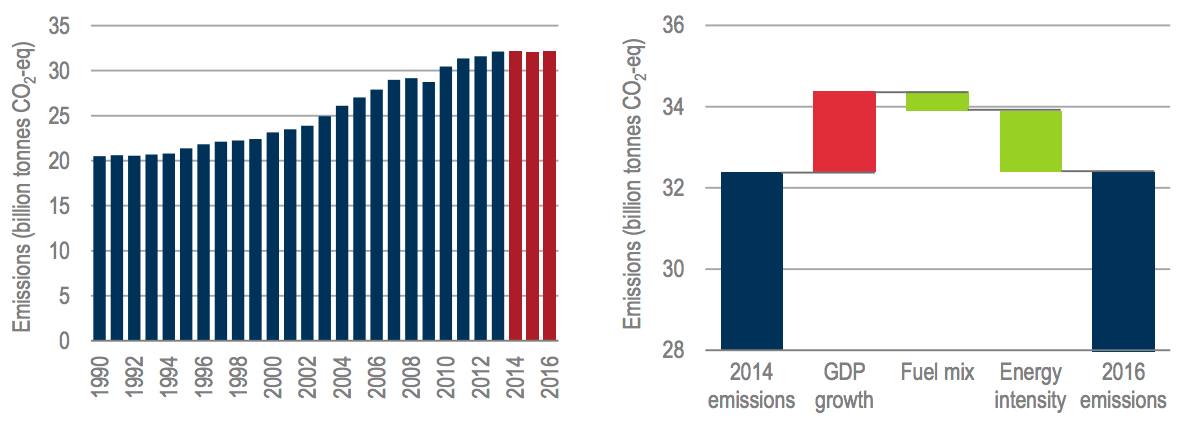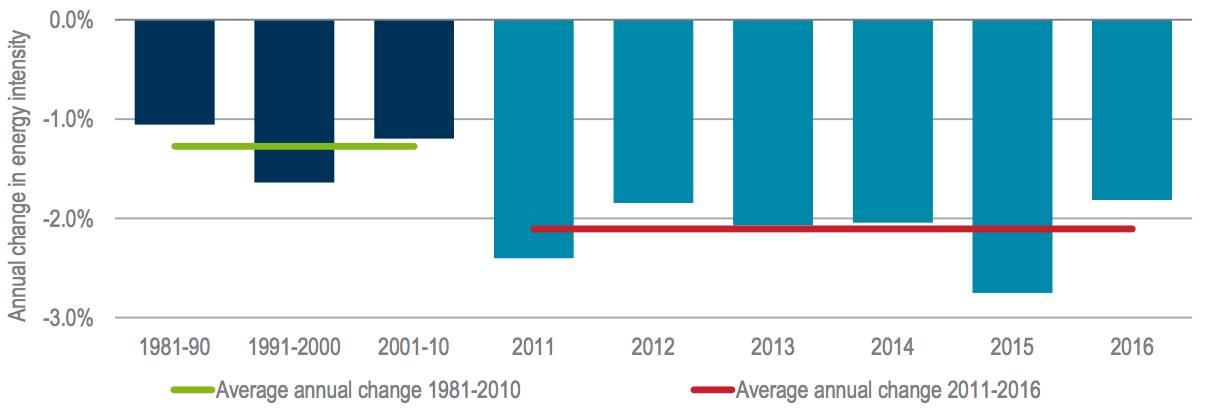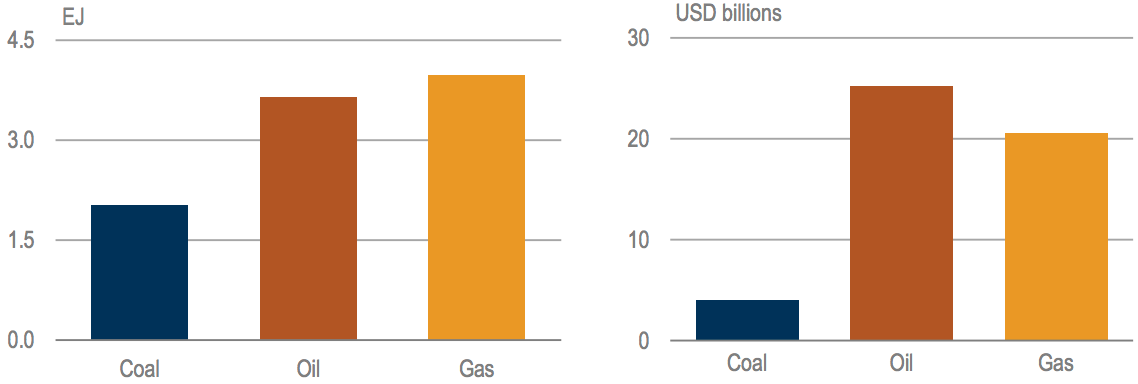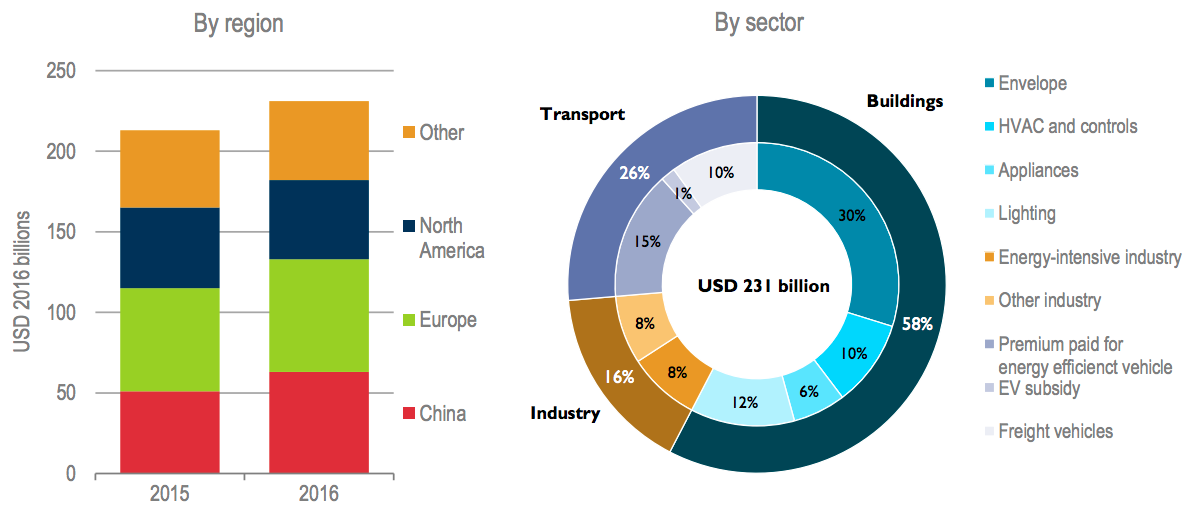[NGW Magazine] Energy efficiency
Global energy efficiency is one way to save costs, but more must be spent as people’s love of technology seems to add at one end what is being saved at the other.
Energy efficiency is an increasingly important cornerstone of energy policy for governments and industry around the world with significant impact on global energy trends. This was the subject of the International Energy Agency’s (IEA) report Energy Efficiency 2017 published in October.
In his foreword, the IEA head Fatih Birol said: “This year, our report highlights the many ways in which energy efficiency is bolstering energy security, reducing energy spending and helping the environment. Notably, improved energy intensity has been the biggest factor behind the recent flattening of global greenhouse gas emissions. The arguments for stronger action on energy efficiency have never been clearer.”
However, he also warns: “Energy efficiency stands at a crossroads today. Strong efficiency gains continued to be made in 2016, even as energy prices fell. But at the same time, governments are not coming up with new policies fast enough, relying on existing regulations instead, precisely at the time when a pipeline of new efficiency policies should be coming into force. There is a risk that efficiency gains could take a step back.”
If energy consumption growth is slowing in many countries, it is thanks to energy-efficiency policies that moderate demand growth as more value and productivity is extracted from each unit of energy.
However, even though virtually every country in the world has agreed to take action to mitigate the impact of global warming, the pace of energy efficiency improvement is slowing down.
Further progress is critical. Without a central focus on energy efficiency by governments and industry, none of the world’s wider energy, environmental and economic goals can be fully achieved. At the same time, energy efficiency offers the promise of greater social and economic benefits, but this is a potential that is still mostly untapped.
Achievements
The IEA estimates that the world would have used 12% more energy in 2016 without the efficiency improvements achieved since 2000. This is equivalent to adding another EU-sized economy to the global energy market.
Industrial energy efficiency did even better. Energy use per unit of economic output in the industrial sector fell by nearly 20% between 2000 and 2016.
The global drop in energy intensity – how much energy is required to produce one unit of economic activity – is the driving force behind the flattening of greenhouse gas emissions (GHG) around the world since 2014 (Figure 1).
Figure 1: Factors influencing GHG

Note: Energy intensity is calculated as TPES per thousand USD of GDP in 2016 prices and PPP (Source: IEA)
Global energy intensity fell by 1.8% in 2016, putting the average annual decline since 2010 at 2.1% – a significant increase from the average rate of 1.3%/yr between 1970 and 2010 (Figure 2).
Figure 2: Annual changes in global primary energy intensity, 1981-2016

Note: Energy intensity is calculated as primary energy demand per USD 1 000 of GDP in 2016 prices at purchasing power parity. (Source: IEA)
Remarkably, energy intensity in 2016 was down 5.2% in China and down 3% in the US, but only down 1.3% across the EU.
China once again had a significant impact on global trends. Efficiency gains made redundant over $230bn of investment for new, coal-fired electricity generation, and cut 1.2bn metric tons from China’s greenhouse gas emissions in 2014 – equivalent to the total emissions of Japan.
The decline in global energy intensity means that the world is benefiting from an energy productivity bonus.
Measured as the difference between actual GDP and the GDP that would have been generated had energy intensity stayed at the previous year’s level, this bonus is estimated to have been $2.2 trillion in 2016. Half of this is attributed to China and $500bn to the US.
Although the improvement in 2016 was lower than in 2015, it was still a significant increase from averages in preceding decades, the IEA said, adding that while global GDP grew by 3% in 2016, global energy demand rose by only 1.1%.
The gains have also lowered household expenditures and increased individual nations’ energy security by reducing their reliance on foreign fuel imports, according to IEA. For example, in Germany the amount spent on energy for homes and cars in 2016 was nearly $580/head lower thanks to energy efficiency.
In addition to the environmental benefits, energy efficiency is also bolstering energy security by reducing oil and gas demand.
Impact on oil and gas
Improvements in energy efficiency have a strong impact on oil and natural gas (Figure 3). In IEA member countries, natural gas accounted for the biggest share of primary energy savings in the period 2000 to 2016.
Figure 3: Import reductions (left) and avoided import costs (right) in IEA member countries in 2016 from efficiency improvements since 2000 by fuel (1EJ=23.88mn metric tons oil equivalent)

Source: IEA
Based on the 2016 fuel mix, the IEA estimates that savings in natural gas were 11% of global gas demand.
Efficiency improvements since 2000 avoided $50bn in additional spending on fossil fuel imports in IEA member countries in 2016. Of this, $20bn were savings in natural gas imports.
The impact of efficiency on reducing gas imports has been particularly pronounced in Europe. In Germany and the UK, Europe’s largest gas markets, energy efficiency improvements since 2000 resulted in gas savings in 2015 that were equivalent to 30% of Europe’s total gas imports from Russia.
Efficiency has also improved short-term energy security by reducing peak daily gas demand. Without energy efficiency improvements over the same period, the UK and France would have needed access to an additional 240mn m³/day gas supply during periods of peak demand.
Key messages
Energy efficiency is the one energy resource that every country possesses in abundance and is the quickest and least costly way of addressing energy security, environmental and economic challenges.
There are a number of key messages from the IEA report on how to benefit from this:
- 2016 confirmed the recent step-up in global energy efficiency gains, with the world continuing to generate more value from its energy use.
- The world is generating more value than ever from its energy use, and there has been a noticeable acceleration in recent years. This is generating economic, social and environmental benefits.
- Energy intensity improvement is the main reason energy related emissions have levelled off.
- Without energy efficiency improvements energy imports would have been higher in many countries, making energy security a more acute issue.
- Policy performance is mixed and new policy implementation slowed significantly in 2016. Stronger policy implementation is essential.
- The global picture masks very different country performances and low rates of new policy implementation. Gains will erode quickly if the pace of policy delivery does not accelerate.
- There is a growing application of energy management systems.
- Energy efficiency in buildings continues to improve, but there is considerable potential to achieve further energy savings by establishing or strengthening standards.
- Wider application of vehicle fuel economy and efficiency standards is needed.
- There is considerable potential to improve energy efficiency in the transport sector.
- Digital technology is expected to enhance the ability for energy efficiency to participate in electricity markets.
Another key message is that decarbonisation requires the integration of efficiency and renewables into the energy system through a harmonised policy approach. A study by the International Renewable Energy Agency showed that combining both could not only reduce energy-related emissions by up to 90% of the carbon reductions required to limit global temperature rise to a maximum of 2 oC above pre-industrial levels, but would also substantially lower the cost of decarbonising national energy systems.
A shift towards renewable energy sources and increasing energy efficiency are two pillars of the global transition towards low carbon energy systems.
Digitalisation driving efficiency
Technological innovation is creating new opportunities for progress on efficiency. Digitalization is beginning to have a significant impact on the energy sector and energy efficiency is emerging as a key arena for innovation.
It is creating exciting new opportunities for integrated solutions where efficiency and renewable energy work together to deliver clean energy outcomes at the lowest cost. As business models adapt to the digital energy world, so too must policy.
Another important factor is the application of energy management systems, which provide a structure to monitor energy consumption and identify opportunities to improve efficiency. This is growing, driven by policy and financial incentives. The number of certifications for ISO 50001 – a global standard for energy management developed by the International Organization for Standardization in 2011 – grew to nearly 12,000 in 2015, 85% of which were in Europe, with verified cost savings increasing up to 12%.
Digital technology is expected to enhance the ability for energy efficiency to participate in electricity markets. The deployment of connected devices is growing, and will impact energy efficiency. By the end of 2016, 4bn connected devices were in use by households worldwide.
Another 1bn devices are expected to be brought into use in 2017, a rate that may triple by 2020. These devices, which can be connected to networks and other devices, provide new opportunities for energy savings through more accurate control of demand.
Smart meters are another weapon in the armoury against waste, although on their own, without a smart grid, their value is limited. Among other benefits, smart meters can complement connected devices, allowing consumers to adjust energy use in response to changes in energy price.
Investment, finance and markets
Global investment in energy efficiency increased by 9% to $231bn in 2016, maintaining the upward trend of recent years, with Europe still accounting for 30% of the total (Figure 4). At 24%, the strongest growth rate was in China.
Figure 4: Energy efficiency investment in 2016 by region and sector

Source: IEA
The IEA report highlighted further room for improvement in buildings’ energy efficiency, where policy efforts so far have focused on insulation rather than the heating and cooling equipment used. There is considerable potential to achieve further energy savings by establishing standards.
Efficiency improvements of 10% to 20% are possible in most countries from appliances, equipment and lighting products that are already commercially available.
In a quickly changing motor vehicle market, the report highlights that fuel efficiency standards for trucks, which represent 43% of total oil consumption for road transport, are coming to the attention of policy makers. According to the IEA, only 16% of the energy use of trucks worldwide was covered by mandatory efficiency policies in 2016.
Fuel economy standards are in place in only four countries: Japan, China, the US and Canada. The EU, India, South Korea and Mexico are expected to introduce standards in the coming years. Worldwide sales of electric vehicles is increasing rapidly, but it is being challenged by low gasoline prices.
The concern though is that investments in energy research and innovation have declined since 2012. Based on data from the IEA R&D Database and the reports ‘World Energy Investment 2017’ and ‘Tracking Clean Energy Progress,’ the IEA warns that shrinking research budgets could affect the dynamic of the ongoing energy transition.
The IEA recommends that governments and the private sector explore ways to improve coordination, target research gaps and build capacity to ensure that the outputs of innovation policies and investments support better policy-making.
However, financing energy efficiency projects is based on ‘savings’, unlike traditional infrastructure or energy projects, which are underpinned by predictable revenue streams. Project bankability normally requires predictable cash-flows subject to legal obligations or contractual arrangements.
Savings need to be measured and verified before they can be accepted by traditional investors and lenders alike. A limited understanding of energy efficiency creates a perception of high risk among investors, which translates to high financing costs.
In order to unlock investments there is a need to make energy efficiency into something that can be more easily understood and financed by institutional capital.
In the next few years two trends are expected to support improvements in energy efficiency:
- the rise of energy services companies that support turning energy efficiency into a tradable commodity;
- and the deployment of connected devices, such as smart meters, that allow for more accurate control of consumption.
Challenges
Nations around the world continued to improve their energy efficiency last year, but a slowdown in new policies threatens to derail the progress and limit efforts to fight climate change. Last year saw the weakest overall progress in energy efficiency policies since 2009. Energy efficiency improvements could slide unless global governments continue implementing new policies.
According to the IEA, meeting the ambitious goal of limiting global temperatures to well below 2degC will be extremely challenging and requires a ‘step change’ in the pace of decarbonisation and efficiency.
Policies to accelerate further low carbon technologies and energy efficiency must be put in place across all sectors to achieve the Paris agreement. It would require carbon emissions to peak in the next few years and the global economy to become carbon neutral by the end of the century.
It also calls for a strong push for greater electrification and efficiency across all end users and a robust and concerted clean energy research and development effort by governments and companies.
However, more than two-thirds of global energy use is still not covered by efficiency codes and standards and the strength of policies is increasing at its slowest rate in recent years. The IEA warns this must change to avoid progress stalling at what it says is a critical time.
Birol said: “There was a noticeable slowdown in the implementation of new policies in 2016 and this trend appears to be continuing in 2017… Countries should focus on attacking the more than 68% of global energy use that is not covered by efficiency codes or standards.”
Nevertheless as the IEA report concluded, global implementation of energy efficiency measures is on the increase, generating global economic, social and environmental benefits.
Charles Ellinas



